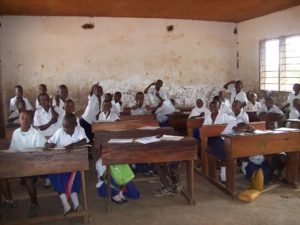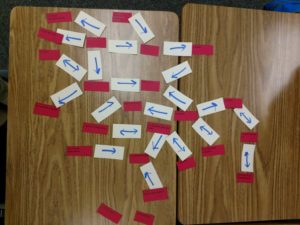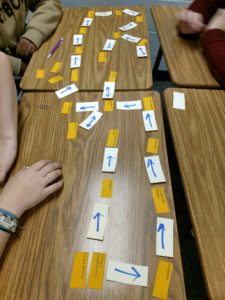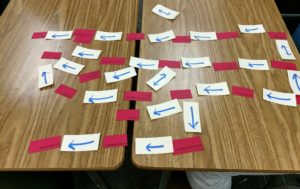 Ahhh, it’s finally my turn to get a snow day! My first goal for the day was to share this unit that I did with my IB students before our holiday break. This is how I addressed the theme of Education with them, click here (New link added on 5/24/2018) for the agenda to which all resources have been linked.
Ahhh, it’s finally my turn to get a snow day! My first goal for the day was to share this unit that I did with my IB students before our holiday break. This is how I addressed the theme of Education with them, click here (New link added on 5/24/2018) for the agenda to which all resources have been linked.
Day 1: In order to introduce our first subtopic, Pourquoi est-ce que certains enfants ne vont pas à l’école?, I began this unit by showing a video from UNICEF to the class. The students then read an infographic about access to education in the world and completed a comprehension guide. Following this interpretive activity, the students completed a “Give One, Get One” interpersonal activity. Lastly, the watched another UNICEF video, for which they completed a comprehension guide.
Day 2: In this lesson the students took notes on a second infographic, using a Six Thinking Hats technique (although I only incorporated five of the hats). Next the students discussed the infographic according to the perspective of the hat they had been assigned. Lastly, they watched a video from 1jour1actu and completed a comprehension guide.
Day 3: The students began by constructing an interactive word wall in their small groups. For this activity, I print one copy of each document (words and arrows) on cardstock for each group. The students place the words face up on their desk and take turns explaining the relationship between two different words and connecting them with an arrow on their desks. After this activity the students were given an infographic about education in Mali. They incorporated information from this document in a letter to the benefactor of their choice in which they asked for a donation to help children in Mali go to school. Here are a few examples of word walls that they created (As you can see, I forgot to copy the arrow cards and had to handwrite some at the last minute-oops!):
Day 4: On the fourth day, the students took an interpretive assessment over the first portion of the unit. For the listening assessment, they completed a comprehension guide for a Les Petits Citoyens video and then answered IB-style questions about an 1jour1actu article.
Day 5: We began the second subtopic, Pourquoi est-ce qu’il y a moins de filles qui sont scolarisées?, by discussing a video and an infographic as a class. The students then annotated another infographic and then discussed it based on their annotations. (Il est intéressant que…, Je n’ai pas compris…, J’étais surprise que.., etc.)
Day 6: The students first watched a video about the education of girls in Guinea and completed a comprehension guide. Next, they read part of a webpage about educating girls and completed a comprehension guide, which they then discussed with a partner.
Day 7: The students wrapped up their investigation of the causes and consequences of the lack of education for girls by reading one of two articles and sharing the information with a partner who had read the other article.
Day 8: The students used the information they had gleaned from the authentic texts to participate in role plays between the parent of a girl in Guinea and a UNICEF volunteer. The students practiced both roles with a variety of partners to prepare them for the following day’s assessment.
Day 9: The students completed an interpersonal speaking and presentational writing assessments on the topic of the education of girls. For the writing assessment, they wrote an interview between a UNICEF volunteer and a Guinean girl’s parent. As they were writing, I called up pairs of students for the role play. (Each student performed with a partner other than the ones they had spoken to the previous day.)
Day 10: I began the final subtopic of this unit–Comment est une école idéale? by passing out a blog post about an ideal school to each small group. The groups completed a graphic organizer with details from their post and then divided the information among their members in order to prepare Google Slides in order to present the ideal school from their reading to their classmates.
Day 11: The students presented the ideal schools from the blog posts and filled in a graphic organizer about their classmates’ presentations. After all of the presentations, I had the students vote for the school they liked the best.
Day 12: Although I ended up running out of time, my intention was that the students would write a description of their own ideal school and submit it to a discussion post on Schoology, our learning management system. They would then have commented on each other’s posts. Although I didn’t have time for this activity, I did assign this interpretive reading assessment (New link 5/24/18) as well as an IB practice speaking assessment using their choice of these two pictures.
I hope you’re staying safe, warm and dry wherever you are!
Image Credit:https://pixabay.com/en/school-africa-child-507977/



